Rikke Lundgreen, Helen Smith, Malin Ståhl, Anita Wernström
Folkestone Triennial Fringe
65 Tontine Street, Folkestone
25 June – 23 July
Even the most charitably inclined would have to regard the seaside town of Folkestone as a somewhat down-at-heel location. It contains a few up market ‘moments’ but, fundamentally, gives off the air of a working town that ran out of work and carries the slight whiff of (polite term) dependency culture to boot. Not chavvy, as a friend remarked, more ‘old school hard’.
In artistic terms, however, this lamentable kind of scenario often spells the opportunity for cheap and available work spaces. Following this logic the Folkestone Triennial, the flagship project of the charity based Creative Foundation, is attempting a large scale renewal of the old town area, redeveloping over sixty buildings for creative usage. Within the context of the ‘Tri’ the assembled artists are invited to use the town as their ‘canvas’, utilising it for both permanent and temporary artworks. Including such luminaries as Tracey Emin, Martin Creed and Mark Wallinger it’s a fairly large scale and well resourced operation with eyes squarely set on a long term artistic stimulation and commercial regeneration of the town’s economy. It’s still early days but, walking around the town, the general sweep and sheer variety of the event quickly becomes apparent. Props, then, for pluck.
Part of this hive of artistic activity, Over Seas is a four-pronged group exhibition featuring the work of Rikke Lundgreen, Helen Smith, Malin Ståhl and Anita Wernström. Through their previous practice with, but frequent separation from, each other the artists propose the idea that they form an interrelated but diverse network, producing an archipelago of ideas and dialogue. More specifically (and appropriate to the Folkestonian setting) the chosen artworks have been selected for their poetic use of the sea as a metaphor for emotional expression. Employing performance, video, drawing and sculpture the centrality of the exhibition is the sea as catalysis for change, referencing both its own essential mutability and as a representation for the transformative reconstruction of the self. That the sea can mean many different things to different people becomes engagingly apparent as one makes progress through the exhibition space.
Beginning with Malin Ståhl’s video Sketches for a Wave the artist’s gambit is, here, elegantly simple; she becomes the sea herself. Using her own body, swathed and hooded in blue fabric (in the absence of the artist the ‘Wave Dress’ itself hangs from the ceiling as proxy), she embodies the notion of the wave as if she were a spiritual medium. In a flurry of movements she captures the extreme variability of wave patterns upon the shore line; sudden, unexpected rushes, slow paced advances, insinuating ‘creeps’ into small spaces and inexorable, incremental upward climbs, a mismatched, on-screen, mirror image of her movements heightening the sense of irregularity and uncertainty. By Ståhl’s usual, more expansive, standards this is a fairly economical piece and the playback taking place on an old, small Grundig TV screen at floor level adds a suitably funky touch. However, it might well be enjoyable, at some future point, to see these movements in a larger format, the better to appreciate the undoubted nuances of the performance.
Helen Smith’s impressive and imposing multi layered Net projects a smoky, densely fogged feeling (purely subjectively I experienced an oddly Dickensian feeling of claustrophobia, akin to inhabiting the house of Miss Havisham in Great Expectations) . Working both as an abstract and a representational piece it enigmatically creates the effect of physically pushing the viewer backwards, as though one were attempting to peer through impenetrable sea mists. Along with its equally optically deceptive companion piece, Cathedral, (an acutely anxiety-provoking trompe l’oiel shot) it also invokes strong sensations of vertigo and slippage, though of a strangely rhythmic kind. The quieter and calming The Sound of Pebbles Hitting Water lets the viewer off the optical hook, however, with its abstracted pseudo Japanese visual approximation of a pleasant aural experience.
Rikke Lundgreen’s contribution centres upon the video installation Hero and Leander, a work inspired by the classical Byzantine tragic-romantic myth. The charming magic lantern-like video set-up (rather cunningly) has a superficially benign feeling to it. However, as one continues to view the piece the emotional dislocation between the bleached white, drowned figure of Leander on the right screen and the calmly moving sea of the left screen invokes a strongly oppressive affect; the uncaring, life consuming, sea will never cease moving, the dead figure will never move again. Elsewhere in the photographic series Shadows: Self Portrait as the poet Tennyson the artist herself masquerades as the 19th Century poet, the images being gradually and deliberately degraded, as if eroded by an incoming tide, until the very nature of the imposture is uncertain.
Primus inter pares status of the collection should probably be awarded to Anita Wernström’s Venus (Flaming June). This performance and video re-interpretation of Lord Leighton’s languid, iconic painting of the Goddess Venus is a remarkable piece of artistic inversion. Sharing only the virulently orange dress and beach setting of Leighton’s work, Wernström replaces the mildly decadent late-Victorian passivity of the original with her own almost elemental presence, transporting the Venus figure off of its painterly couch and boldly re-assigning it (to wit herself) into the sea. Adopting the same supine posture as Leighton’s character she seems, in performance, not so much defiant of as indifferent to the waves that increasingly wash over her; her immobile figure apparently as much an implacable force of nature as the sea itself. Shot at dawn (with excellently exact durations for each sequence of the performance) and recreated live at sun set in Folkestone for the opening night of the exhibition, the work acts as a excellent counter weight to the main thrust of the pieces in Over Seas; the sea does not dissolve the ego here, the self pushes back the sea.
Keiron Phelan

Malin Ståhl
Sketches for a Wave
2009 video still
© Malin Ståhl
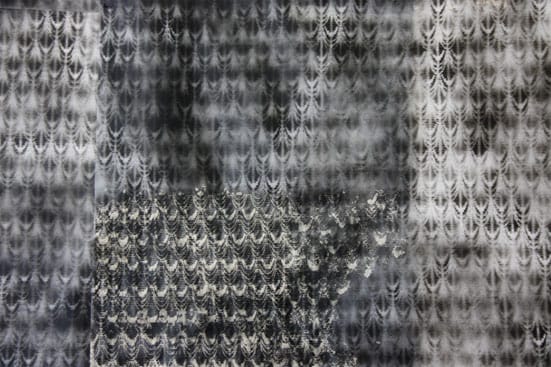
Helen Smith
Net, 2011 detail
© Helen Smith
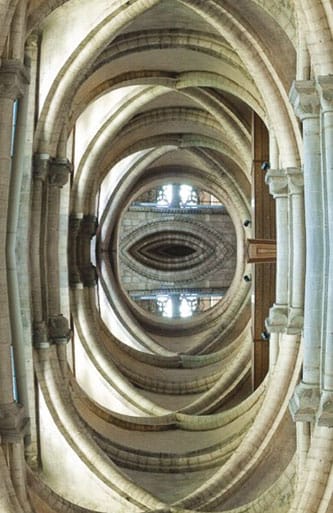
Helen Smith
Cathedral, 2011 detail
© Helen Smith
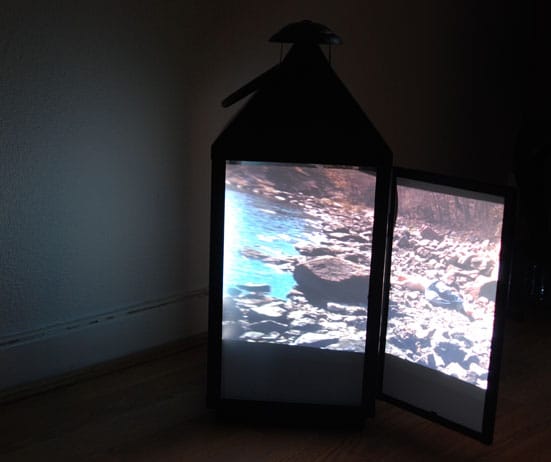
Rikke Lundgreen
Hero and Leander 2010 video installation
© Rikke Lundgreen
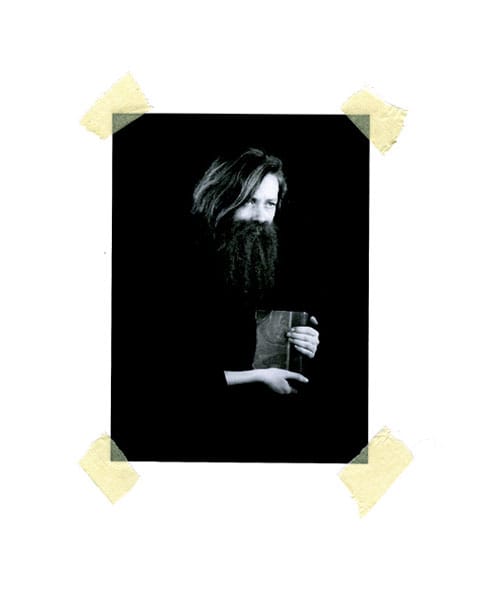
Rikke Lundgreen
Shadows: Self Portrait as the poet Tennyson 2011
© Rikke Lundgreen
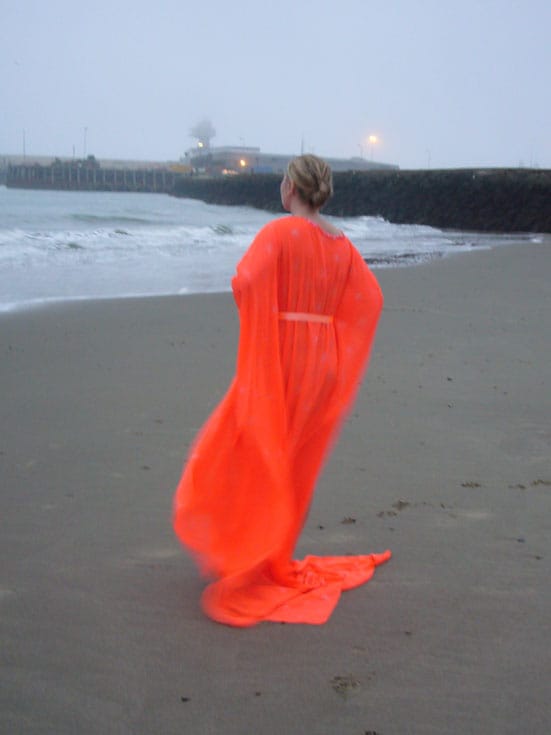
Anita Wernström
Venus (Flaming June), Folkestone performance 2011
© Anita Wernström